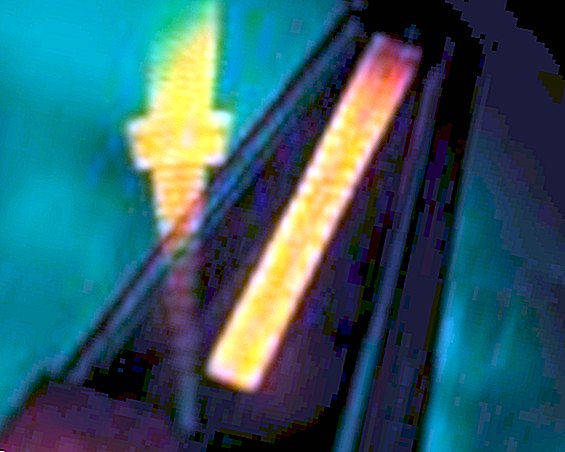Rhythm as medicine

Rhythm ? this is music and dance, waltz, tango or swing. Jumping and jumping, walking and turning, weighing and swinging: these processes determine our lives, even when we do not even notice. Flexible and elastic, at a rapid pace or in long, quiet cycles, our organ systems function individually and in concert.
New research shows how important the right rhythm is for our health? and what we can do to get it going. "All life processes are rhythmic: electrical signals pulsate in milliseconds through the nervous system, heartbeat and respiration take place every few seconds, stomach and intestinal muscles contract every few minutes," Dr. Jürgen Schürholz, internist and long-time medical director of the Stuttgart Filderklinik.
Some processes are repeated a thousand times an hour, others need more time: we sleep or wake up in a 24-hour rhythm, the female hormones vibrate in monthly changes, other body functions follow the changing seasons. Characteristic of all processes is that something is repeated in a similar way. Rhythm (from Greek "flowing") is alive, never uniform, never monotonous? in contrast to the clock, whose regular beats determine, for example, the chugging of an engine, the rattling of a machine, the knocking of a jackhammer.
Heart and circulation: just no lockstep

This is particularly evident in the heartbeat: "The heart does not march in lockstep - it dances," says physiologist Maximilian Moser from the Joanneum Research Institute for Noninvasive Diagnostics in Weiz, Austria.
The time interval between two heart beats varies confidently around a certain basic value, similar to a Viennese waltz: The quick three-quarter time clock is given, but the turns fall out more and less lively. Such pronounced "heart rate variability" is the prerequisite for the heart to adapt well to stress, both physical and mental, and thus a measure of health.
Does the distance between two pulse beats remain relatively rigid? If the heart is at best a narrow chestnut foxtrot ?, is danger in arrears. "The more monotonous and thus tact-like the heartbeat is, the more paralyzing it affects the entire organism, the easier it gets ill," says Moser. Too much regularity can even be life-threatening: for once, when a baby's heart beats completely uniformly during birth, all alarm bells ring in midwives. "Because this machine-like palpitation indicates that the baby is in mortal danger and immediate intervention is required," said Moser.
To make the heart waltz visible, Max Moser has teamed up with engineers to develop a nearly iPod-sized portable compact ECG device ("Heartman"). Thus, heartbeat and "heart rate variability" can be visualized as well as other bodily rhythms: nerve activity, blood pressure, the relationship between heartbeat and respiration and sleep in its various phases. A 24-hour recording of the "Heartman" with approximately 100,000 measured values results in an individual graphic ("autochronous image"). It shows how exhausted the organism is and how well it can still recover.
Moser also uses these results therapeutically. In cooperation with Austrian nursing, rehabilitation and spa facilities, he has developed a rhythm program for construction workers and nursing staff. Both professions often work in shifts, their everyday lives are characterized by work and mental stress. As therapy they were prescribed regular breaks, exercise training and eurythmy (exercises from the anthroposophic medicine, which harmonize the body internally and externally) as well as a leadership and communication training? And lo and behold: Already after a quarter of the accident frequency went back to almost zero on construction sites? a very unusual in occupational medicine. The nurses were also provided with a rhythmic pause culture with compensatory exercise exercises for shorter periods of miscarriage and illness and more peace of mind in everyday life.
The diagnosis by Heartman and a special rhythm cure (from three days) Moser now also offers for individuals in a spa clinic in Althofen / Austria (more info at www.kurbad-althofen.at/rhythmus).
Live rhythmically? what you can do for it
But the stabilizing and strengthening effect of the right rhythm can also be tested in everyday life. A few simple measures help.
Fixed times: Babies and toddlers develop best when they have a regular daily routine with reliable times for eating, playing and sleeping.But a well-structured day also helps adults to feel well: "Rhythm saves strength and spares the nerves," says Jürgen Schürholz.
Poems for the heart: More often recite poems in the meter of the hexameter, for example, by Schiller ("The walk"): "Hail, my mountain, with the reddish radiant summit, greet me, Sun, greeted him, so lovely!" Rhythm researcher Dirk Cysarz from the Gemeinschaftskrankenhaus Herdecke, together with colleagues from Bern and Graz, found out that this rhythmic speech helps to synchronize heartbeat and breathing. This joint swing regulates heart rate and blood pressure? a phenomenon that is otherwise only achieved in the recovery phase of deep sleep.
Breaks with plan: Our activity cycles are every 1.5 hours. At the latest after two hours of strenuous activity? whether mentally or physically? follows the first slack. Therefore, working through for hours inevitably leads to exhaustion. Small breaks of a few minutes at 1.5 to 2 hours intervals (breathe deeply at the open window, stretch and stretch, run around the house) keep you fresh and efficient, even during a stressful, long working day.
Learn eurythmy: a system of movement exercises to speech or music, which originates from anthroposophic medicine and literally translates as "the beautiful rhythm". "The exercises help to learn a culture in dealing with the time, to organize the everyday meaningfully, so that we do not sleep at the right moment," says the social scientist. Christine Kahlhammer, Vienna, who has already taught many company employees and executives how to better structure their everyday lives with eurythmic exercises (www.kairoscompany.com). Therapists are to be inquired about www.eurythmie-info.de or the Professional Association Eurythmy Therapy, Roggenstraße 82, 70794 Filderstadt, Tel 0711/7799723. An individual lesson costs about 40 to 50 euros, a ten-hour course about 100 to 120 euros.
Rhythm cure for the abdomen: Who eats regularly, supports the stomach with its rhythmic continuous performance? and prevents indigestion. Depression in the stomach, bloating, flatulence, constipation or diarrhea often occur because you are eating too irregularly, too hastily, too late or too much. Drugs are often less effective than a rhythm cure, as Jürgen Schürholz recommends: eating or drinking consistently for one to two weeks only every two or four hours? each to even or odd hours. Thus, the stomach and intestines receive continuous impulses, which help them to regroup their normal rhythm. And then the symptoms often disappear as if by magic.










